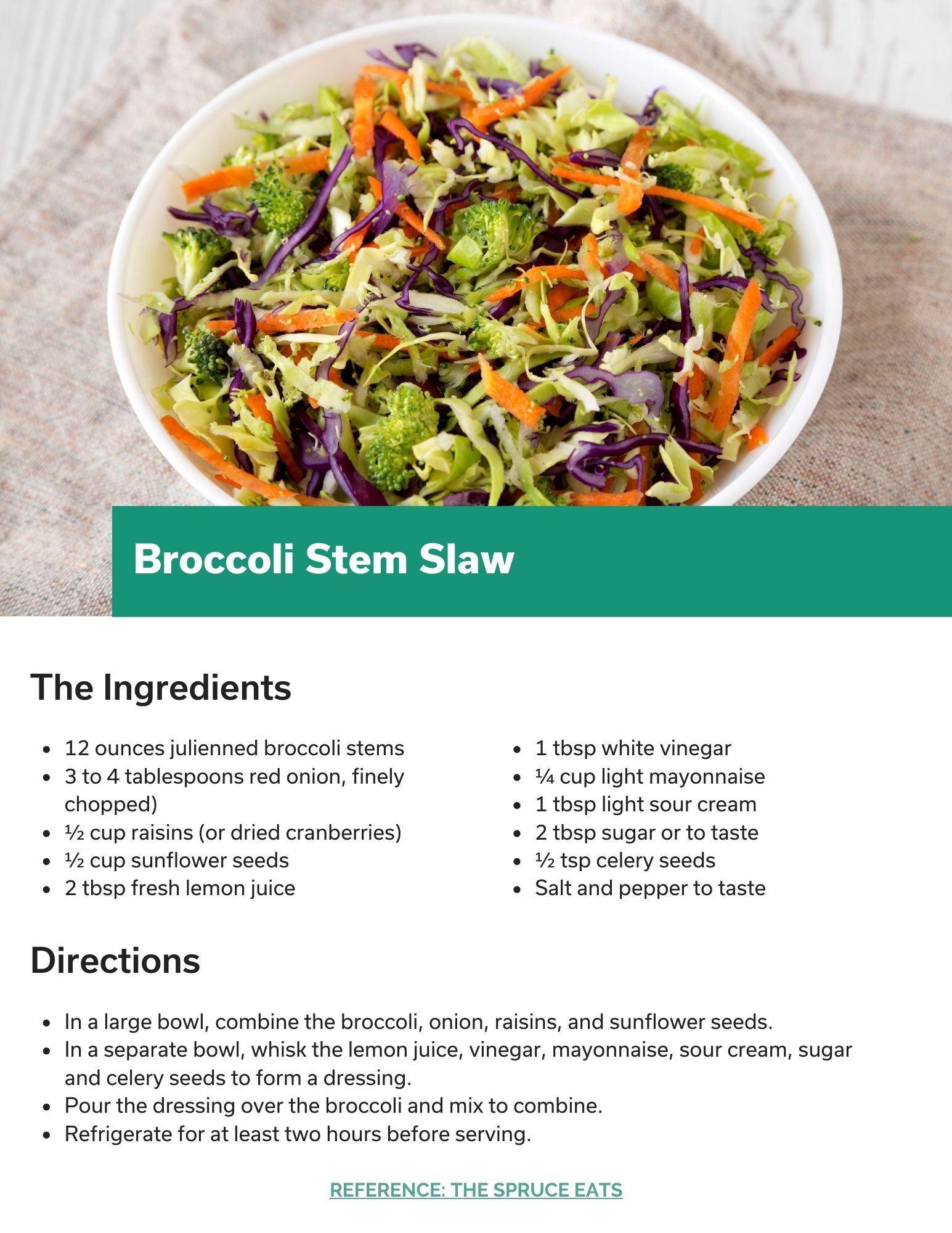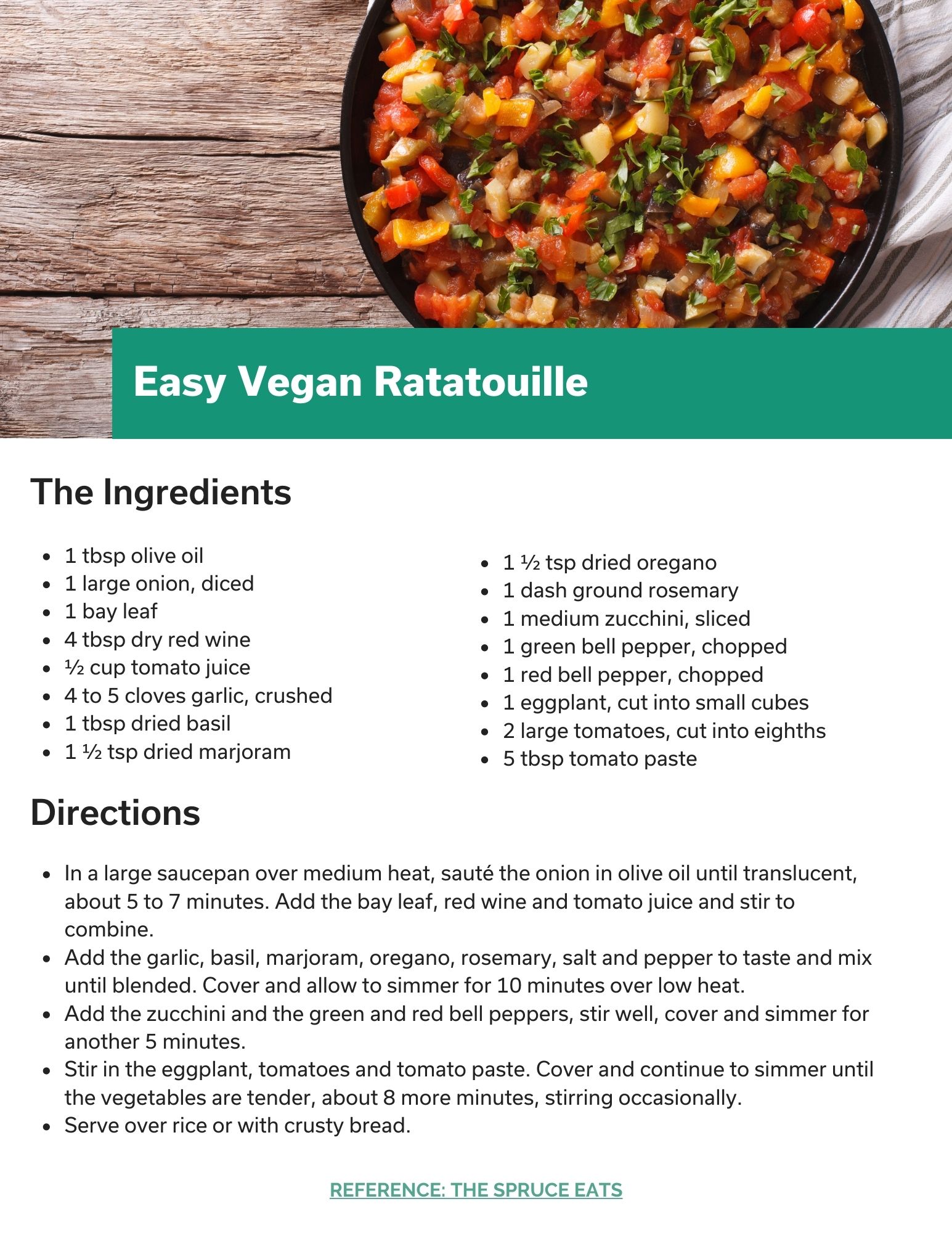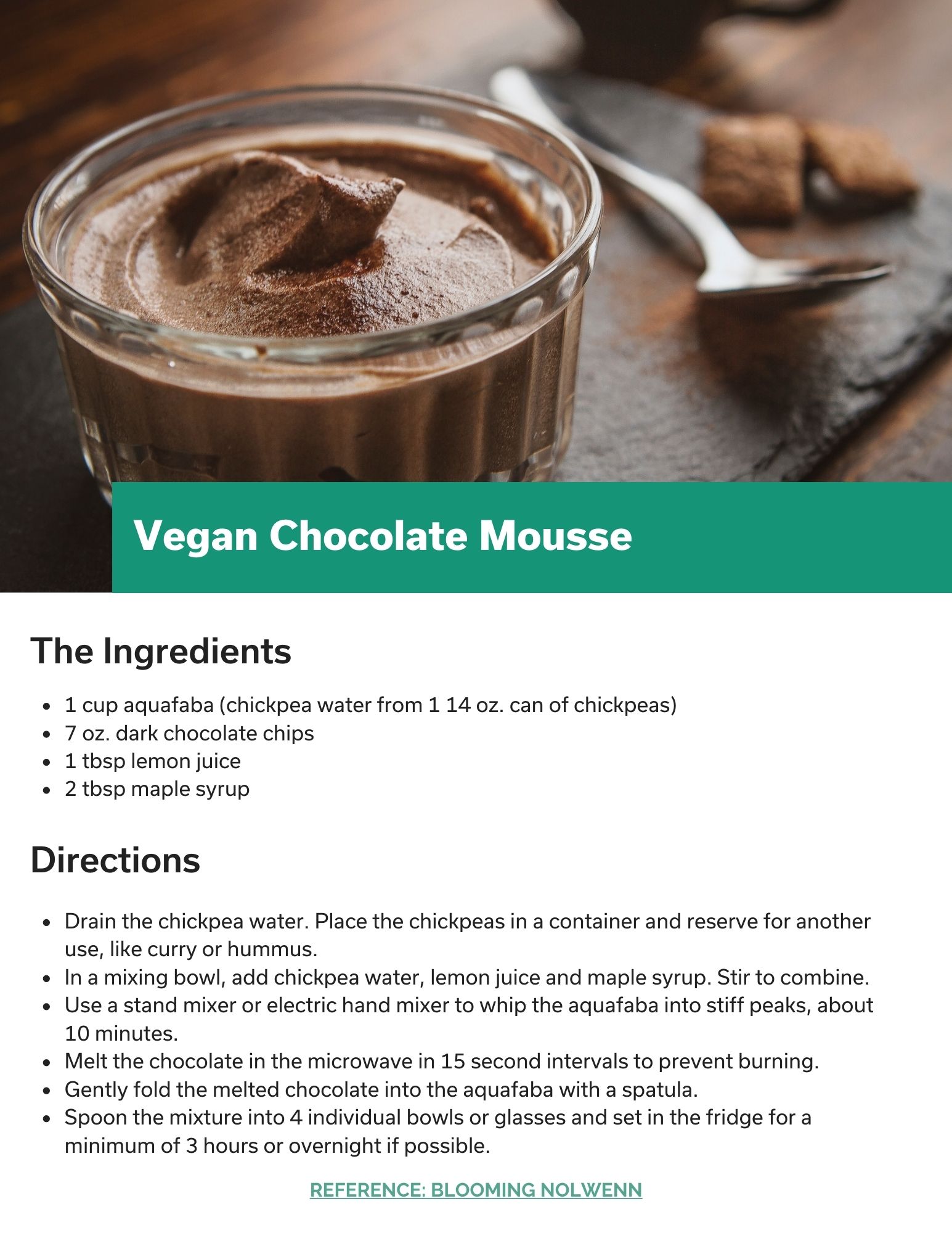How to Reduce Food Waste at Home
Posted in

The next time you’re at the grocery store, take a mental snapshot of all the tasty and colorful foods you see. Next, conceptualize about a third of that inventory going directly in trash cans, dumpsters and landfills. Seems like a huge waste, right?
As Americans move to a more eco-friendly environment, food waste still remains a big challenge. This blog will discuss how home cooks and home shoppers can reduce food waste. We will also provide recipe ideas and inspiration to boost your garden with leftover scraps.
How much food is wasted in the U.S.?
In the United States, 30 to 40 percent of the food supply goes to waste, according to the U.S. Food & Drug Administration. Food waste in America amounts to $161 billion and 133 pounds of uneaten food – or as much as 20 pounds of food per person per month.
Food waste goes straight in the trash – not to compost or regrow food. The Environmental Protection Agency estimates that about 81 percent of food waste ends up in landfills or combustion facilities, according to data from 2018.
How does food waste affect the environment?
According to the EPA, food waste has a significant impact on the environment. The process from getting food from farms to your table requires energy and resources. Each year, about 80% of the country’s freshwater is required to grow plants and provide hydration for animals. Additionally, about 10 percent of the country’s energy is needed to harvest, package and deliver goods.
To put things in perspective, the resources used to produce food that goes to waste each year would supply enough water and energy for 50 million homes in the U.S. Additionally, food waste can also impact air quality, accounting for greenhouse gas emissions of more than 42 coal-fired power plants. Greenhouse gasses trap heat in the atmosphere and can impact climate change.
As for the excess food itself that ends up in landfills, methane gas is created as part of the decomposition process. Compared to CO2. methane is 28 to 36 times more powerful in terms of trapping heat in the atmosphere.
Food waste solutions
Food waste at home adds up due to the main issues – planning, storage and cooking. Here are some solutions to avoid each category.
Planning ahead
One of the biggest culprits of food waste starts at the point of purchase. Whether it’s not checking the pantry or buying in bulk when only a small quantity is needed, failing to plan can result in a large chunk of your shopping cart ending up in the trash.
Plan ahead each week by mapping out your meals. Write down a specific list of items you need and when you plan to use them. Don’t just write the item, either. Consider noting how many portions you will need. If you find yourself with a refrigerator of items that need to be used by a certain date, come up with recipes tailored to those specific foods so they don’t go to waste.
Be wary of buy one, get one free deals. These marketing gimmicks are done for a reason – to get you to spend more money. But buying two loaves of bread for the price of one is wasteful if you only need one loaf.
When applicable, consider buying items from a bulk bin. For example, choose one lemon for a single recipe instead of a bag of lemons that may go to waste. Plus, bulk bins reduce packaging needs, which is also beneficial for the environment.
Storing foods
Knowing about food safety and food storage can go a long way in preventing food waste. Many people improperly store food in their refrigerators only to find lettuce wilted or fruit turned rotten after just a few days.
With the exception of mushrooms and peppers, you should store most vegetables in a high humidity drawer. Fruits, meanwhile, should be stored in a low humidity drawer. Don’t store bananas, avocados and stone fruits (plums, peaches, apricots) near other fruits – they release a gas that can cause rapid ripening to other foods.
It's common for people to store milk and eggs on the door, but this is actually the warmest part of the refrigerator due to constant opening and closing. Milk should be stored at the back of the bottom shelf where the fridge is coldest.
Sweet potatoes, potatoes, onions and garlic should remain at room temperature in a dry, dark place such as a garage or cabinet.
Cooking foods
Visually, those vegetables you bought last week may seem wilted and unappealing, but that doesn’t mean you should throw them away. Foods that look ugly can still taste good with the right preparation.
Fruit is a perfect example. A bruised, brown apple may look unappetizing, but it can be peeled and cooked down into a jam or applesauce. Other fruits can be blended up for smoothies.
Before you think about throwing away scrawny looking vegetables, repurpose them in soups or casseroles. If you forget to use some slices of your favorite bread, don’t throw it away. Cube it up to make bread pudding or, if you have a food processor, pulse it up to make homemade breadcrumbs.
Portioning also contributes to food waste. Cook only what you need. It may sound over simplistic, but it’s common for people to cook in bulk only to forget about that container of chicken in the back of the refrigerator.
After you cook a meal, put your food away within two hours to avoid spoiling and the formation of bacteria. Most homemade meals will stay fresh in the refrigerator for several days and up to a week. For questions about how long you can keep a certain food, use the FDA’s FoodKeeper app.
For packaged foods, make sure you’re familiar with the difference between the various food labels. Confusion over these dates accounts for an estimated 20 percent of food waste. Many people think the dates listed are for food safety. However, food manufacturers provide a date to signal to consumers when the product should be used to experience the best quality.
Here are common labels found of food packaging:
- “Best if Used By/Before” – This date lets consumers know when the product will taste the best by. This isn’t a safety date.
- “Sell-By” – This date is more for grocery stores and inventory purposes. This isn’t a safety date.
- “Use-By” – This date lets consumers know when the product will have the best quality. This isn’t a safety date.
- “Freeze-By” – This date is found on packaged meats, such as beef, pork, chicken, turkey and seafood and lets consumers know when it should be frozen to ensure the best quality. It isn’t a safety date.
What to do with food scraps
Cooking from scratch inevitably leaves plenty of scraps – carrot tops, onion skins, garlic peels, celery stalks, corn cobs, herb stems and much more.
Instead of throwing this “garbage” out, simply store the remnants in a container in your freezer. Over time, your stash will add up to the point where you can make a vegetable stock. Take a pot of cold water, add the vegetable bits, whichever seasonings you prefer and simmer for hours until it develops a rich flavor.
The same goes for meat and seafood scraps. When eating bone-in chicken, beef, turkey, pork or shrimp, save the bones and shells to make a stock or bone broth. To develop even more flavor, consider roasting the bones before simmering them in water to break down the collagen.
As for fruits, you can turn your leftover scraps into vinegars. For example, place apple cores and skins in a jar of fresh water with about a tablespoon of sugar. Stir the mixture every day for about a week and strain before using.
Other examples include:
- Broccoli or cauliflower stems for coleslaw
- Overripe bananas for breads and desserts
- Potato skins to make a crispy snack
- Unwanted cheese rinds to thicken soups or sauces
- Stale bread to make desserts or turn into breadcrumbs
Zero waste dinner recipes
Broccoli stem slaw
When preparing and eating broccoli, the florets are usually the star of the show and the woody stems end up in the garbage. This recipe is an easy way to repurpose broccoli stems by julienning them for coleslaw. The crunch mimics the texture of cabbage that is found in most coleslaws.
Easy vegan ratatouille
The focus is on vegetables here, and a ratatouille is an ideal way to use up whatever you happen to have in the refrigerator. It’s also a good way to repurpose any leftover wine you have or any old tomatoes that can be juiced.
Vegan chocolate mousse
Chickpeas and dessert? This concept may seem bizarre, but the liquid from a can of chickpeas, which most people throw down the drain, is viscous enough to add a light and airy texture to chocolate mousse. Plus, this recipe calls for just four ingredients and takes just a few minutes to put together.
Foods to grow from scraps
The ends of vegetables and seeds tend to be obvious things home cooks throw in the garbage. But did you know these scraps can be regrown into more fruits and vegetables?
Vegetables
Potatoes are a perfect example. After weeks in your pantry, this starchy vegetable will eventually start growing “eyes” on them. These imperfections may signify the potato needs to be tossed, but they can be easily trimmed off before using. To regrow a potato, take a section that includes the eye and place it in soil with the eye facing up.
Onions, green onions, scallions and leeks can regrow simply by taking a piece of the bulb or stem and placing it in a shallow dish with an inch or two of water.
Aside from potatoes and members of the onion family, here are some other vegetables you can regrow from scraps:
- Sweet Potatoes
- Celery
- Fennel
- Root vegetables (Carrots, turnips, parsnips, beets)
- Lettuce and other leafy greens
- Cabbage
- Herbs (Basil, parsley, mint, cilantro)
- Peppers
Fruits
You can also regrow fruits simply by planting their seeds in a portable container with soil – a mason jar or even the plastic pint-sized containers that berries are packaged in works well. To plant the seeds, cover the container with soil and place the seeds on top followed by a thin layer of soil. Mist the top of the soil to keep it moist and place in a sunny spot until the seeds sprout.
Here are some other fruits you can regrow from discarded scraps and seeds:
- Citrus fruits (lemons, oranges, grapefruits)
- Kiwi
- Berries (raspberries, strawberries, blueberries)
- Apples
- Stone fruits (peaches, pears, nectarines, plums, cherries)
- Tomatoes
- Melons
- Mangos
What food scraps can be composted?
Composting is always an option for people who can’t repurpose food scraps in their kitchen.
The concept of composting is simple – you combine your food scraps, such as vegetable peels, with something like dead leaves or grass clippings and then add water. Once completed, use the compost to fertilize and hydrate your flower beds and gardens.
Here are some suggestions for what to use to compost:
- Fruits
- Vegetables
- Eggshells
- Coffee grounds
- Tea bags
- Nut shells
For more trending health and wellness content, visit the INTEGRIS Health For You blog.






